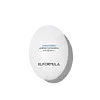What's inside
What's inside
 Key Ingredients
Key Ingredients

 Benefits
Benefits

 Concerns
Concerns

No concerns
 Ingredients Side-by-side
Ingredients Side-by-side

Water
Skin ConditioningOctocrylene
UV AbsorberEthylhexyl Methoxycinnamate
UV AbsorberButylene Glycol
HumectantGlycerin
HumectantEthylhexyl Salicylate
UV AbsorberC12-15 Alkyl Benzoate
AntimicrobialGlycereth-26
HumectantMethylene Bis-Benzotriazolyl Tetramethylbutylphenol
UV FilterSaccharomyces Ferment
Skin ConditioningTitanium Dioxide
Cosmetic ColorantPolyglyceryl-6 Distearate
Emulsifying1,2-Hexanediol
Skin ConditioningHydroxyacetophenone
AntioxidantPEG-100 Stearate
Glyceryl Stearate
EmollientDiglycerin
HumectantAluminum Stearates
EmollientJojoba Esters
EmollientDecyl Glucoside
CleansingMethylpropanediol
SolventAllantoin
Skin ConditioningPotassium Cetyl Phosphate
EmulsifyingLauroyl Lysine
Skin ConditioningGlucose
HumectantAlumina
AbrasivePolyhydroxystearic Acid
EmulsifyingAlpha-Glucan Oligosaccharide
CleansingPolyglyceryl-3 Beeswax
EmulsifyingCetyl Alcohol
EmollientXanthan Gum
EmulsifyingCarbomer
Emulsion StabilisingSodium Hyaluronate
HumectantDisodium EDTA
Triethanolamine
BufferingPropylene Glycol
HumectantPolymnia Sonchifolia Root Juice
Skin ConditioningStephania Tetrandra Root Extract
Skin ConditioningMaltodextrin
AbsorbentEctoin
Skin ConditioningCaprylic/Capric Triglyceride
MaskingPropanediol
SolventHydrogenated Lecithin
EmulsifyingHexylene Glycol
EmulsifyingStearic Acid
CleansingCholesterol
EmollientBeta-Glucan
Skin ConditioningCeramide NP
Skin ConditioningTrifolium Pratense Extract
Skin ConditioningLactobacillus
Skin ConditioningCentella Asiatica Extract
CleansingPolygonum Cuspidatum Root Extract
AntioxidantScutellaria Baicalensis Root Extract
AstringentLespedeza Capitata Leaf/Stem Extract
Skin ConditioningCamellia Sinensis Leaf Extract
AntimicrobialGlycyrrhiza Glabra Root Extract
BleachingChamomilla Recutita Flower Extract
MaskingRosmarinus Officinalis Leaf Extract
AntimicrobialWater, Octocrylene, Ethylhexyl Methoxycinnamate, Butylene Glycol, Glycerin, Ethylhexyl Salicylate, C12-15 Alkyl Benzoate, Glycereth-26, Methylene Bis-Benzotriazolyl Tetramethylbutylphenol, Saccharomyces Ferment, Titanium Dioxide, Polyglyceryl-6 Distearate, 1,2-Hexanediol, Hydroxyacetophenone, PEG-100 Stearate, Glyceryl Stearate, Diglycerin, Aluminum Stearates, Jojoba Esters, Decyl Glucoside, Methylpropanediol, Allantoin, Potassium Cetyl Phosphate, Lauroyl Lysine, Glucose, Alumina, Polyhydroxystearic Acid, Alpha-Glucan Oligosaccharide, Polyglyceryl-3 Beeswax, Cetyl Alcohol, Xanthan Gum, Carbomer, Sodium Hyaluronate, Disodium EDTA, Triethanolamine, Propylene Glycol, Polymnia Sonchifolia Root Juice, Stephania Tetrandra Root Extract, Maltodextrin, Ectoin, Caprylic/Capric Triglyceride, Propanediol, Hydrogenated Lecithin, Hexylene Glycol, Stearic Acid, Cholesterol, Beta-Glucan, Ceramide NP, Trifolium Pratense Extract, Lactobacillus, Centella Asiatica Extract, Polygonum Cuspidatum Root Extract, Scutellaria Baicalensis Root Extract, Lespedeza Capitata Leaf/Stem Extract, Camellia Sinensis Leaf Extract, Glycyrrhiza Glabra Root Extract, Chamomilla Recutita Flower Extract, Rosmarinus Officinalis Leaf Extract
Water
Skin ConditioningCyclopentasiloxane
EmollientPhenylbenzimidazole Sulfonic Acid
UV AbsorberGlycerin
HumectantCentella Asiatica Leaf Water
Skin ConditioningDimethicone
EmollientTromethamine
BufferingPolyphenylsilsesquioxane
Terephthalylidene Dicamphor Sulfonic Acid
UV AbsorberVinyl Dimethicone
Panthenol
Skin ConditioningPEG/PPG-17/6 Copolymer
SolventDimethicone/Vinyl Dimethicone Crosspolymer
Skin ConditioningGlyceryl Glucoside
HumectantDimethicone/PEG-10/15 Crosspolymer
PEG-10 Dimethicone
Skin ConditioningHexylene Glycol
EmulsifyingHydroxyacetophenone
AntioxidantDipotassium Glycyrrhizate
HumectantDipropylene Glycol
HumectantSodium Citrate
BufferingTocopherol
AntioxidantArtemisia Vulgaris Extract
Skin Conditioning1,2-Hexanediol
Skin ConditioningWater, Cyclopentasiloxane, Phenylbenzimidazole Sulfonic Acid, Glycerin, Centella Asiatica Leaf Water, Dimethicone, Tromethamine, Polyphenylsilsesquioxane, Terephthalylidene Dicamphor Sulfonic Acid, Vinyl Dimethicone, Panthenol, PEG/PPG-17/6 Copolymer, Dimethicone/Vinyl Dimethicone Crosspolymer, Glyceryl Glucoside, Dimethicone/PEG-10/15 Crosspolymer, PEG-10 Dimethicone, Hexylene Glycol, Hydroxyacetophenone, Dipotassium Glycyrrhizate, Dipropylene Glycol, Sodium Citrate, Tocopherol, Artemisia Vulgaris Extract, 1,2-Hexanediol
 Reviews
Reviews

Ingredients Explained
These ingredients are found in both products.
Ingredients higher up in an ingredient list are typically present in a larger amount.
1,2-Hexanediol is a synthetic liquid and another multi-functional powerhouse.
It is a:
- Humectant, drawing moisture into the skin
- Emollient, helping to soften skin
- Solvent, dispersing and stabilizing formulas
- Preservative booster, enhancing the antimicrobial activity of other preservatives
Glycerin is already naturally found in your skin. It helps moisturize and protect your skin.
A study from 2016 found glycerin to be more effective as a humectant than AHAs and hyaluronic acid.
As a humectant, it helps the skin stay hydrated by pulling moisture to your skin. The low molecular weight of glycerin allows it to pull moisture into the deeper layers of your skin.
Hydrated skin improves your skin barrier; Your skin barrier helps protect against irritants and bacteria.
Glycerin has also been found to have antimicrobial and antiviral properties. Due to these properties, glycerin is often used in wound and burn treatments.
In cosmetics, glycerin is usually derived from plants such as soybean or palm. However, it can also be sourced from animals, such as tallow or animal fat.
This ingredient is organic, colorless, odorless, and non-toxic.
Glycerin is the name for this ingredient in American English. British English uses Glycerol/Glycerine.
Learn more about GlycerinHexylene Glycol is a surfactant. Glycols are a class of alcohols. Hexylene Glycol is a surfactant and emulsifier.
As a surfactant, Hexylene Glycol helps gather dirt and oil on your skin to be washed away.
As an emulsifier, Hexylene Glycol helps keep water and oil together. This prevents them from separating in a product. Hexylene Glycol also thins out the texture of a product by lessening viscosity.
Hexylene Glycol has a small molecular weight.
Learn more about Hexylene GlycolHydroxyacetophenone is antioxidant with skin conditioning and soothing properties. It also boosts the efficiency of preservatives.
This ingredient is not irritating or sensitizing.
Water. It's the most common cosmetic ingredient of all. You'll usually see it at the top of ingredient lists, meaning that it makes up the largest part of the product.
So why is it so popular? Water most often acts as a solvent - this means that it helps dissolve other ingredients into the formulation.
You'll also recognize water as that liquid we all need to stay alive. If you see this, drink a glass of water. Stay hydrated!
Learn more about Water